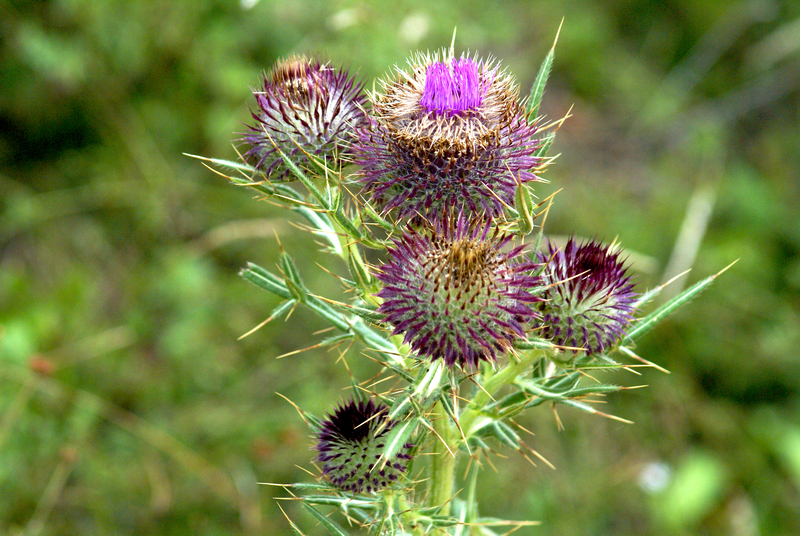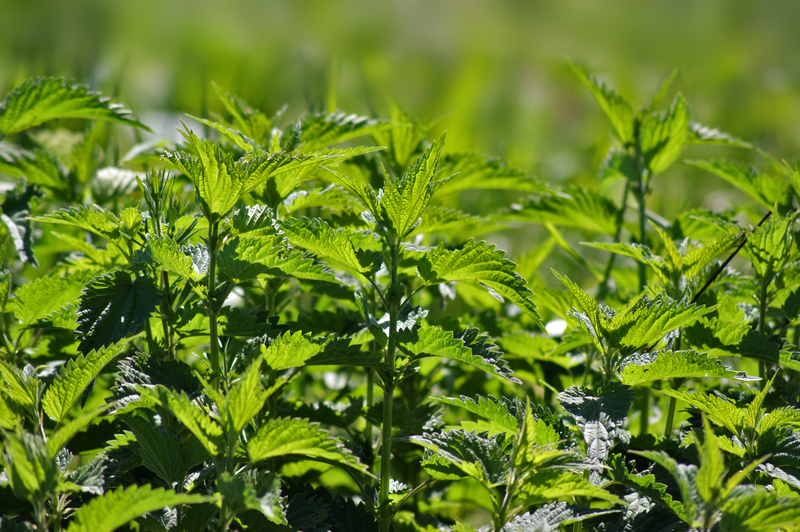Create a Perfect Outdoor Play Area for Kids
Posted on 18/06/2025
Create a Perfect Outdoor Play Area for Kids: The Ultimate Guide
Are you looking to create a perfect outdoor play area for your kids? Giving children a thoughtfully designed space to play outside delivers enjoyment, encourages healthy habits, and sparks lifelong creativity. This comprehensive guide explores ideas, tips, and expert advice on building a fun, safe, and engaging backyard play space your children will love.
Why an Outdoor Play Area is Important for Kids
The benefits of outdoor play for kids are numerous and well-documented. An outdoor play area is not just an opportunity for fun--it's also a cornerstone of children's physical, social, and emotional development. Here's why:
- Physical Health: Running, jumping, and climbing in the fresh air fosters better fitness, bone health, and motor skills.
- Imaginative Play: Outdoor environments nurture creativity, problem-solving, and role-playing.
- Social Skills: Play areas become gathering spots where kids learn to share, negotiate, and collaborate.
- Mental Well-being: Time outdoors reduces stress, enhances mood, and connects children with nature.
- Reduced Screen Time: An appealing outdoor space gives kids an exciting alternative to digital devices.

Key Considerations Before You Start
Building the ideal outdoor play area involves more than picking a swing set. Take time to assess your space, needs, and budget before you begin.
Assess Available Space
- Measure carefully: Take accurate measurements of your yard or garden. Factor in existing landscaping and structures.
- Accessibility: Ensure easy and safe access to and from the play area for all family members.
- Supervision: Position play areas where you can keep an eye on the kids without obstacles blocking your line of sight.
Know Your Kids
- Consider children's ages, interests, and abilities--younger kids need different features than older ones.
- Talk to your children about what they'd love to see in their play space.
- Plan for growth so the area remains relevant as your kids get older.
Set a Budget
- Prioritize safety and durability over fancy features.
- Explore DIY and upcycling options to cut costs.
- Invest in items that will last and grow with your child.
Safety First: Non-Negotiable Elements
When building an outdoor play area for children, safety should always be your primary concern. Ensure every aspect meets or exceeds modern safety guidelines:
- Soft Landing Surfaces: Use materials such as rubber mulch, sand, or wood chips around play equipment to cushion falls. Avoid hard surfaces like concrete and gravel.
- Sturdy Construction: Select equipment designed for children, anchored securely, and free from sharp edges or pinching points.
- Shade and Hydration: Provide shaded areas with canopies or umbrellas and keep drinking water close at hand, particularly in hot weather.
- Age-Appropriate Features: Ensure swings, slides, and climbing frames suit the age and size of your children.
- Fencing and Gates: If your garden is near roads or water sources, install fencing to contain the play zone.
- Routine Inspections: Regularly check for loose bolts, worn ropes, and other hazards.
Essential Components for the Perfect Kid's Outdoor Play Area
An exceptional children's outdoor play area should blend fun, adventure, and learning opportunities. Consider incorporating these key components:
1. Traditional Playground Equipment
- Swings: Classic belt swings, toddler seats, or tire swings provide endless excitement.
- Slides: Choose gentle slopes for little ones and taller slides for older children.
- Climbing Structures: Jungle gyms, monkey bars, and rock-climbing walls boost strength and confidence.
- See-Saws and Merry-Go-Rounds: These add a social and kinetic element to play.
2. Nature and Sensory Elements
- Sandpits: Encourage tactile, creative play--just remember a cover to keep animals out.
- Water Features: Tables, misters, or splash pads transform hot days and foster scientific learning.
- Gardening Plots: Kids can dig, plant, and watch flowers or vegetables grow, nurturing patience and responsibility.
- Natural Materials: Include boulders, logs, and tree stumps for imaginative obstacle courses and fort building.
3. Activity Zones for All Ages
- Sports Space: A patch of grass for soccer, tag, or catch. Mark out zones for hopscotch or four-square.
- Art Stations: Weatherproof tables for painting, building, or messy crafts.
- Quiet Corners: Hammocks, reading nooks, or teepees offer downtime and a retreat from high-energy activities.
- Imaginative Play: Add a playhouse, pirate ship, or castle--these structures fuel stories, social games, and role-play.
4. Flexible and Modular Elements
- Moveable Pieces: Oversized building blocks, tires, or crates can be rearranged for different games.
- Chalkboards or Whiteboards: Interactive surfaces inspire creativity and can be used for learning games.
- Obstacle Courses: Use ropes, hula hoops, and mats to set up challenging courses that can change regularly.
Design Ideas for Every Space and Budget
Whether you have a sprawling yard or a cozy urban backyard, you can design an outdoor play area for kids that fits your space. Here are some inspiring ideas:
For Large Backyards
- Multi-Zone Layouts: Divide the area into distinct play zones (swings, garden, sports, quiet zone) to suit different moods and ages.
- Treehouses or Platforms: Elevated spaces are thrilling for kids and add a magical feel.
- Bicycle Tracks: Create loops or trails for safe scooter and bike riding.
- Natural Playscapes: Use landscaping--hills, logs, and native plants--to blend play with nature.
For Small Backyards or Courtyards
- Vertical Play: Install climbing walls or hanging gardens along fences.
- Foldaway and Stackable Toys: Opt for modular equipment you can stow when not in use.
- Compact Water Play: Use buckets, splash tables, or inflatables for cooling off.
- Multipurpose Surfaces: Painted hopscotch or chessboards on patios double as decorative and functional features.
DIY and Upcycled Solutions
- Transform old tires into swings, sandpit edging, or climbing features.
- Build a fort with pallets, sheets, and fairy lights for budget-friendly magic.
- Create musical walls using pots, pans, and recycled materials.
- Personalize with hand-painted stepping stones, signs, or custom nameplates.
Tips to Make Your Outdoor Play Area Stand Out
To create the best outdoor play space for children, focus on a few areas that elevate your play area above the ordinary:
- Engage All the Senses: Use colorful elements, fragrant plants, textured materials, and sound features.
- Add Lighting: Outdoor string lights or solar path lights let play continue after sunset and create a magical atmosphere.
- Seating for Grown-Ups: Comfortable benches or chairs encourage adults to relax and supervise, making the space inclusive.
- Rotating Activities: Change up features or introduce new challenges (a scavenger hunt or obstacle course) to keep play fresh.
Maintaining Your Outdoor Play Area
A beautiful children's play area needs regular care to ensure it remains safe, clean, and inviting:
- Check and maintain all structures and surfaces weekly for wear, damage, or hazards.
- Clean sandpits and water features regularly to prevent bacteria and pests.
- Refresh mulch, sand, or safety surfacing as needed.
- Wash toys and play equipment with non-toxic, child-friendly cleaners.
- Inspect plants for thorns, poisonous species, or allergic risks and replace as needed.
Eco-Friendly and Sustainable Outdoor Play Spaces
When planning the perfect outdoor play area for kids, eco-conscious choices benefit both your family and the environment:
- Choose sustainable materials: Opt for FSC-certified wood, recycled plastics, or natural stones.
- Encourage wildlife: Install bird feeders, butterfly gardens, or bug hotels.
- Favor native plants: These need less water, attract beneficial insects, and reduce allergy risks.
- Repurpose materials: Upcycle wherever you can for a unique, low-impact design.
Teaching children about sustainability and nature through play is a valuable gift that lasts a lifetime.
Involving Kids in the Design Process
Your children are the true experts on "fun." Involve them in the design and creation of the outdoor play area for a space they'll want to use every day:
- Let kids help draw up plans, pick colors, or choose features.
- Encourage kids to assist with planting, painting, and building (with supervision).
- Include handmade elements like painted rocks, mosaic stepping stones, or personalized signs.
This cooperative approach not only results in a more beloved play space but also builds confidence and ownership.

Frequently Asked Questions
- How big should an outdoor play area for kids be?
Size isn't as important as safety, variety, and creative design. Even a small area can provide hours of fun with the right features. - What is the best ground cover for a play area?
*Rubber mulch, wood chips, pea gravel, or sand* provide the best cushioning for falls. Avoid concrete or asphalt in active zones. - Is it necessary to cover the play area for shade?
*Yes!* Shade protects kids from UV rays and heatstroke. Living shade (trees or climbing plants), fabric sails, and umbrellas are all good options. - Can I create a play space on a budget?
*Absolutely!* Many outstanding play areas use upcycled materials, handmade toys, and creative DIY features.
Conclusion: Bring Imagination to Life
Building the perfect outdoor play area for kids is a rewarding project that improves your family's quality of life. By focusing on safety, creative play, and lasting memories, your backyard will become a cherished place where your children grow, laugh, and dream.
Whether your play area is sprawling or compact, high-tech or handmade, the most important ingredient is love. Start planning today--the greatest adventures begin at home!

